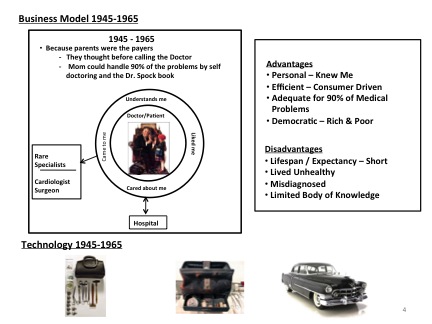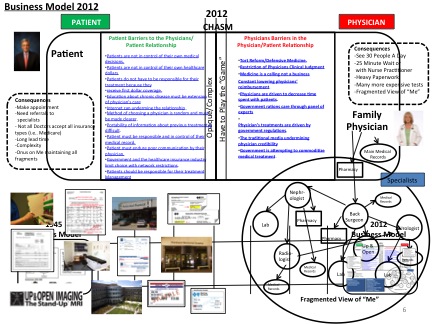Finally, it is official. Ben Rhodes, the deputy national security adviser for strategic communications, admitted that the Obama administration lied about the Iranian Nuclear deal to the press, public and congress.
His interview with David Samuels in a New York Times Magazine typified the approach to manipulating the truth by the Obama administration in all areas of the administration’s activities.
The administration has been trying to walk back Ben Rhodes’ statements for a week. The traditional media is trying to bury his statements even though the king of the mainstream media (the New York Times) published the interview.
The justification for this behavior is that it has been used by all-previous administrations including that of George Bush. It is therefore an insignificant objection.
Ben Rhodes explained to David Samuels, in the New York Times profile that, “it was first necessary to lie to a corrupted and inexperienced American media about all sorts of things, beginning with the nature and intentions of the enemy in this case the Iranian regime.”
Subsequent lies were added, as the White House took advantage of a dangerous mix of journalists’ ignorance, their ideological and partisan commitment to the administration, and finally, their career aspirations.
It reminds me of Jonathan Gruber’s attitude toward the press and President Obama’s pretense that he hardly knew Jonathan Gruber.
http://stanfeld.com/?s=Jonathan+Gruber
https://www.google.com/search?q=Ben+Rhodes+Iran+nuclar+deal&ie=utf-8&oe=utf-8
Rhodes went on to say, “The average reporter we talk to is 27 years old, and their only reporting experience consists of being around political campaigns… They literally know nothing.”
This implies the lack of respect the Obama administration has for the press, Americans and for the virtue of honesty. It is not a good example for our youth’s future behavior and the way to mange a Point of View.
Thus they (the press) will believe what he tells them. He also tells friendly non-governmental organizations and think tanks what he is telling the journalists. Those outlets produce “experts” whose expert opinion is just what Rhodes wants it to be. These ignorant young journalists thus have quotes that look like independent confirmation of the White House’s lies. :
Ben Rhodes admitted, when David Samuels asked, “We created an echo chamber of freshly minted experts cheerleading for the deal. ‘They were saying things that validated what we had given them to say.’
This is the apparent attitude of President Obama and his administration. It is applied to every lie they have told to the American people.
Ben Rhodes described a tactic that is an extension of Sol Alinsky’s playbook. I believe the American people are catching on.
The defendants of the Obama administration marginalize the people who expose the lies with additional lies.
The Obama administration and its defendants are usually effective in marginalizing their opponents.
The defendants of the lie have the power of the pulpit and a friendly mainstream media.
The same tactics are used in defending Obamacare as I have described many times in my blog.
I find it difficult to believe that so many smart people believe these lies.
Carl Sandberg said “if you tell I lie enough times its eventually becomes the truth.” This is especially true when people start adjusting and investing in the lie.
Marilyn Travenner, now that she is CEO of the healthcare insurance industry lobbying group, has a different point of view than when she was the head of CMS. Someone else other than government is paying her.
I have said that the dysfunction in the healthcare system is the fault of all the stakeholders, namely the government, the healthcare insurance companies, the drug companies, the physicians and the patients.
Each group adjusts to a dysfunctional element making the healthcare system more dysfunctional. The growing dysfunction is driven by the multiple points of view.
President Obama’s ideology has accelerated the dysfunction.
Marilyn Travenner is now diverting blame for the dysfunction away from the healthcare insurance industry. Many do not realize that the government run healthcare system is totally dependent on the healthcare insurance industry. The healthcare insurance industry does the administrative services for the government.
The administration brags that CMS’ overhead is only 2.5-5% of Medicare’s cost. This is an illusion; It is false.
The percentage of overhead published does not include the cost paid by the government to outsource the administrative services to the healthcare insurance industry.
The administrative services overhead is added into the cost of healthcare. Insurance premiums are calculated using the Medical Loss Ratio calculation. Many insurance company expenses are considered direct medical care expenses. Direct medical care expenses should only be for direct medical care.
The government programs set payments to the healthcare insurance industry for administrative service according to the Medical Loss Ratio.
Insurance administrative expenses, like a help desk or network selection expenses, should not be included in direct medical cost. Presently, it is the method used by the healthcare insurance industry to ultimately take 30-40% of the healthcare dollars off the top.
President Obama and his administration brag that Obamacare is bending the healthcare cost curve for Medicare and Medicaid. The only reason this was true in 2012 and 2013 was because Obamacare’s hidden taxes from citizens at every income level were being collected while there were no Obamacare medical care expenditures until 2014. The 2014 and 2015 cost curve was bent upward contributing to the 19 trillion dollar deficit.
In my last blog I mistakenly left out the word contributing to the 19 trillion dollar deficit. Obamacare is not budget neutral. It is not presently bending the healthcare cost curve.
Some smart people believe Obamacare is bending the healthcare curve because they uncritically believe all the administration’s press releases.
In the last few weeks we have been warned not to believe everything President Obama and his administration tell us.
The cost of physician services might be increasing on a retail level. However, government and insurance reimbursement to physicians is decreasing.
Travenner, in her previous life blamed the rising cost of medical care on physicians. In order to divert attention from the healthcare insurance industry she continues to blame physicians.
This is an incorrect premise. It is true that hospital costs are rising. If the premise is incorrect the solution is usually incorrect.
Next, Ms. Travenner explains additional reasons for increasing premiums.
She omits the most important reasons for the increase in drug prices to the public.
President Bush’s deal with congress to pass Medicare Part D was to eliminate government’s ability to negotiate drug prices with the drug companies. The government negotiates drug prices for the military and VA. It gets negotiated prices that are comparable to all other countries on the globe.
At the same time the government restricts consumers from buying prescription drugs in Canada, suppressing competition.
The Obama administration keeps blaming the drug rules on President Bush’s administration. Why hasn’t President Obama renegotiated a better deal in the last seven years, or just change the rules by executive order as he usually does?
Tavenner also hit on “the point that restructuring the insurance market hasn’t paid benefits as expected.”
New regulations requiring Obamacare insurers to provide plans with a host of minimum benefits, as well as being unable to deny benefits to people with pre-existing conditions, has left insurers exposed to adverse selection.
In plainer terms, it means sicker people who’d been shut out of the insurance system previously have flooded in, and not enough healthier individuals have enrolled.
This last point is valid. The claim that the insurance industry is losing money is not true. It is losing money on adverse selection but they are making up that loss by increasing premium prices to the government and the corporate market.
If they did not make money how could they pay CEOs of some healthcare insurance industry companies 100 million dollars a year?
Finally, Tavenner cautioned that the turbulence can be expected because insurers “sit in the three-R world.”
What Tavenner is alluding to are two programs that are set to end in 2017: the reinsurance program that provided payments to plans that enroll higher-cost members, and the risk corridor, which acted like a modern day Robin Hood by taking excessive profits from top-performing insurers and giving them to Obamacare insurers losing excessive amounts of money.
Without the risk corridor, new insurance entrants could be discouraged, since they’d be responsible for covering the entirety of their losses. The third “r,” risk adjustment, will remain in place to distribute capital from plans with low-risk enrollees to those with high-risk.
The reinsurance aspect of Obamacare was probably illegal. The government guaranteed the insurance companies that it would make up whatever loss they claimed. The Obama administration paid the healthcare insurance industry only 12% of the promised amount. This deception by the government has led to some of the reasons UnitedHealthcare and now Aetna are pulling out of Obamacare’s health exchanges.
However, the government is totally dependent on the healthcare industry for it administrative services.
The devil is always in the details.
There is an ever-growing need to lie to manage the public’s point of view in favor of Obamacare.
The public is becoming aware of the Obama administration’s attempt to mange the public’s point of view. Ordinary citizens are madder than hell at the Obama administration and the establishment in both the Democratic and Republican parties.
The opinions expressed in the blog “Repairing The Healthcare System” are, mine and mine alone.
All Rights Reserved © 2006 – 2015 “Repairing The Healthcare System” Stanley Feld M.D.,FACP,MACE

